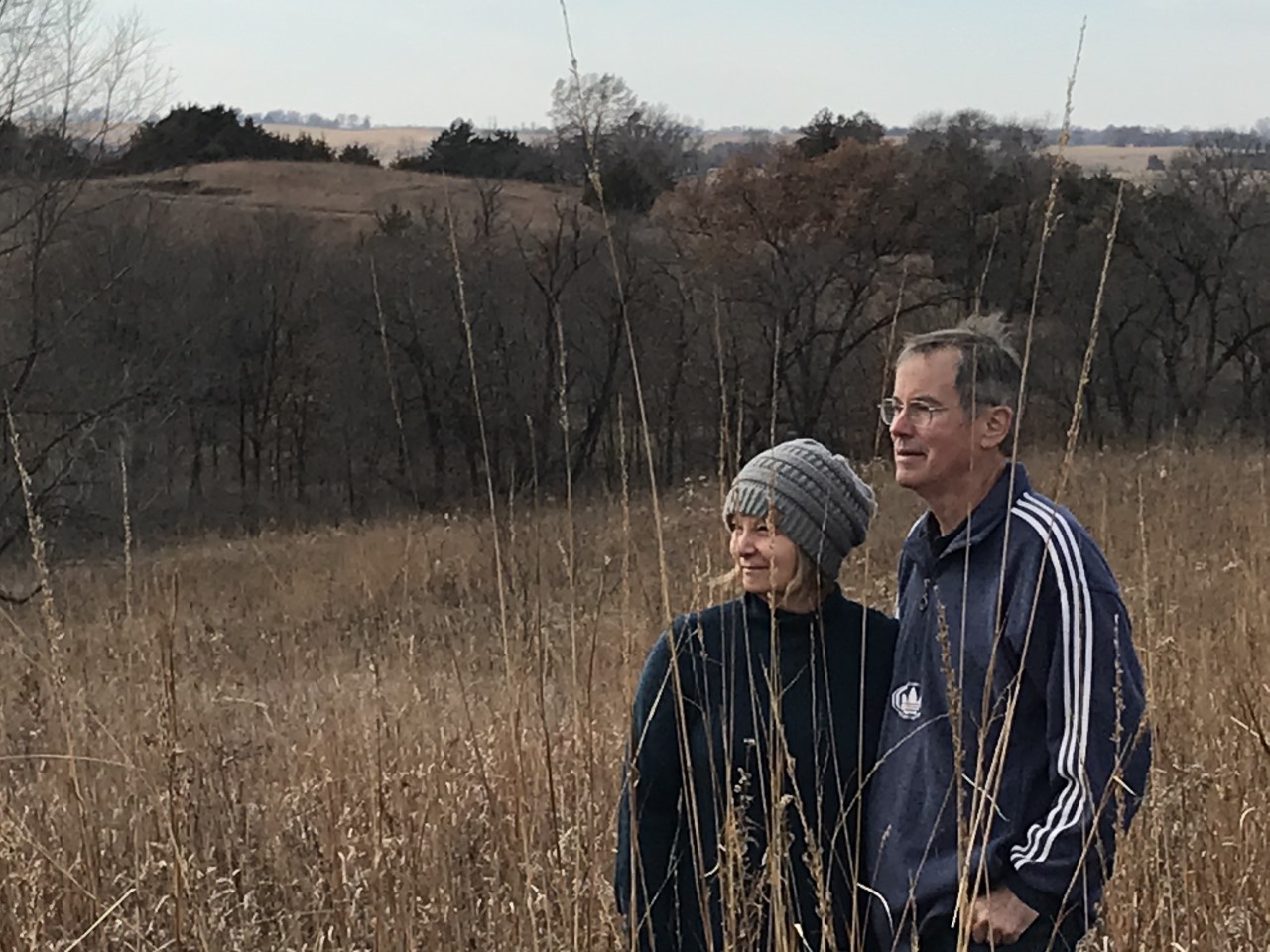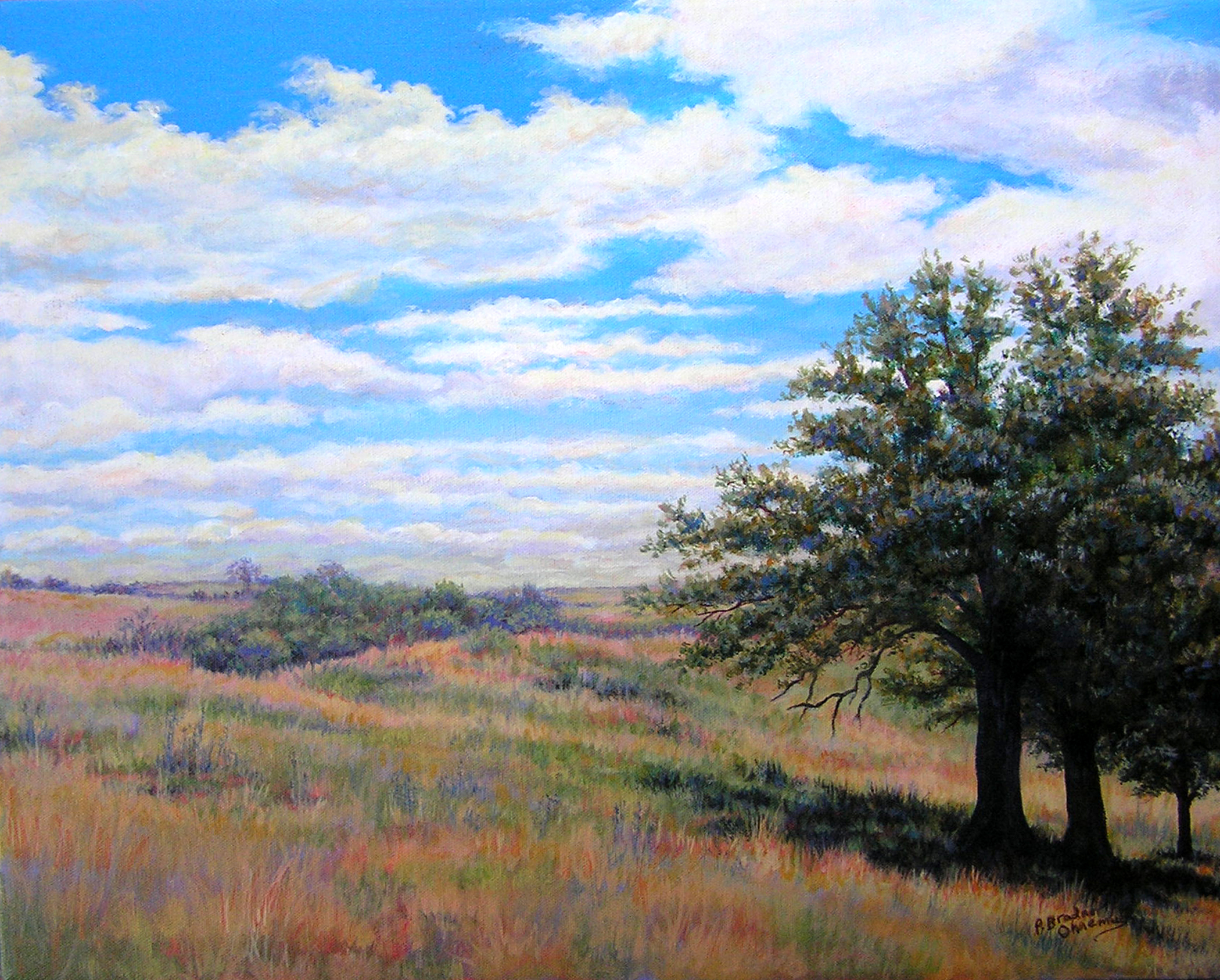Work of a Lifetime
By Katy Heggen on February 17, 2020 in Blog
Good things come to those who wait. Better things come to those who go in search of them. Such seems to be the case for Ray and Patti Hamilton.
It was in this way that the couple found and fell in love with Codfish Hollow Hill Prairie, 60 acres of remnant and reconstructed prairie-covered hills and wooded valleys east of Maquoketa in Jackson County.
The Hamilton’s have spent the last 35 years slowly restoring, reconstructing and stewarding what Ray now refers to as his “flagship prairie.” Over the years, they have formed an intimate relationship with this place and several other special spots on the eastern side of the state. These experiences led them to empower others to rediscover remnants on their own land and connect prairie enthusiasts across Iowa.
A discovery
 Ray, a lifelong outdoorsman and physician, first became interested in seeking out high quality native habitat sites shortly after he and Patti moved their young family to Maquoketa.
Ray, a lifelong outdoorsman and physician, first became interested in seeking out high quality native habitat sites shortly after he and Patti moved their young family to Maquoketa.
“There’s a lot of native vegetation in that area and at the time, no one was doing much of that,” he said. “The topography is really unique, it (the habitat) is extremely diverse. There were a lot of opportunities for finding special native spots.”
Recognizing a need to learn more about prairie, Ray and Patti sought out the expertise of ecologists, conservationists and fellow prairie enthusiasts. They visited prairies in western Iowa’s Loess Hills and northern Iowa’s prairie pothole region and other parts of the state. Often they did so in the company of prairie experts from academia, land trusts and conservation agencies.
“We met a lot of smart, passionate people and learned from them on those field trips. It was very powerful,” Ray said.
Equipped with this recently acquired knowledge, inspiration, and insights from local landowners, Ray and Patti set out in search of overlooked or forgotten native prairies.
It wasn’t long before they found themselves driving down a gravel road, scanning the landscape for signs of remnants, when they spotted some native vegetation on the roadside.
The site was promising, so Ray and Patti decided to see what else they could learn about the area. When they returned in July with the owner’s permission to do some exploring, they caught a glimpse of yellow through the adjacent wooded valley.
“We set off through the field, down into the valley and came up on an open spot filled with compass plants and coneflowers. It was magical. We were just entranced,” Ray said. From there, they continued to the next neighboring valley, and the next, each time surfacing in a sea of wildflowers.
“It was like finding a lost civilization,” he said.
Ray and Patti purchased the property, now known as Codfish Hollow Hill Prairie, in 1984. Their first priority was to protect its twelve remnant prairies. The second was to reconstruct the prairie between them using locally sourced native prairie seed, reconnecting the remnants and creating a buffer between them and the surrounding crop ground.
“We decided early on that we wanted this place to be a genetic preserve for local prairie species in peril,” Ray said. “By this time, I had been looking all throughout the county and had identified about a dozen little spots of high quality native prairie. They were all sort of independent, difficult to get to spots that were otherwise unprotected. With landowners’ permission, we hand picked the seed for the reconstructed part of the prairie from those spots.”
The result is a blend of remnant and reconstructed prairie that includes over 100 native prairie species, among them one of the northern most native populations of Purple coneflower. This diversity supports an astounding array of wildlife including the rare Leonard’s Skipper butterfly and several Species of Greatest Conservation Need.
“You can just feel Ray and Patti’s passion for this place,” INHF Conservation Easement Specialist Tylar Samuels said. “They’ve really invested themselves in the land, and it shows.”
Seeding connections

In their quest to learn about and locate native sites, Ray and Patti met leaders in Iowa’s prairie movement as well as local landowners. It was through these relationships they learned about a 34-acre remnant prairie in Jones County and a 29-acre fen (a rare type of wetland) in Fayette County.
They ultimately purchased, restored and protected both properties. They sold Hamilton Prairie to Iowa Natural Heritage Foundation (INHF), donating a portion of the land’s value, in 2008.
It is now owned and managed by Jones County Conservation Board. They donated their portion of the fen to INHF in 2017 and established a fund to support its future stewardship.
Ray, a founding member of the Iowa Prairie Network and past board member of Jackson County Conservation Board, has also met with countless landowners to learn more about their land and share opportunities to protect the overlooked gems tucked into their own hills, valleys and hard-to-reach ridges.
“Everyone is interested in learning about whether they have something special on their property,” he said.
A calling
This year, Ray and Patti decided to permanently protect Codfish Hollow Hill Prairie, donating a conservation easement, a popular protection method that allows a landowner to permanently protect their land's special features while retaining private ownership and use, to INHF.
“It’s something you can’t explain,” Ray said as he reflected on his passion for Iowa’s prairie. “It’s built into me. I think there must be some intrinsic internal drivers in each one of us. It’s just a matter of opening that up and letting it flow.”
Today, waves of wildflowers greet visitors to Codfish Hollow Hill Prairie, the blooms spilling out over the hills. It’s a different kind of effect than the one Ray and Patti first experienced all those years ago, but one that is equally – if not more – magical.
“I take that drive around the edge slowly, just taking in the wonder and the beauty of the whole thing,” Ray said. “It’s hard to believe there was a time when you couldn’t see one prairie hilltop from another. Now, it’s a continuous community. It’s a feeling that’s hard to explain.”